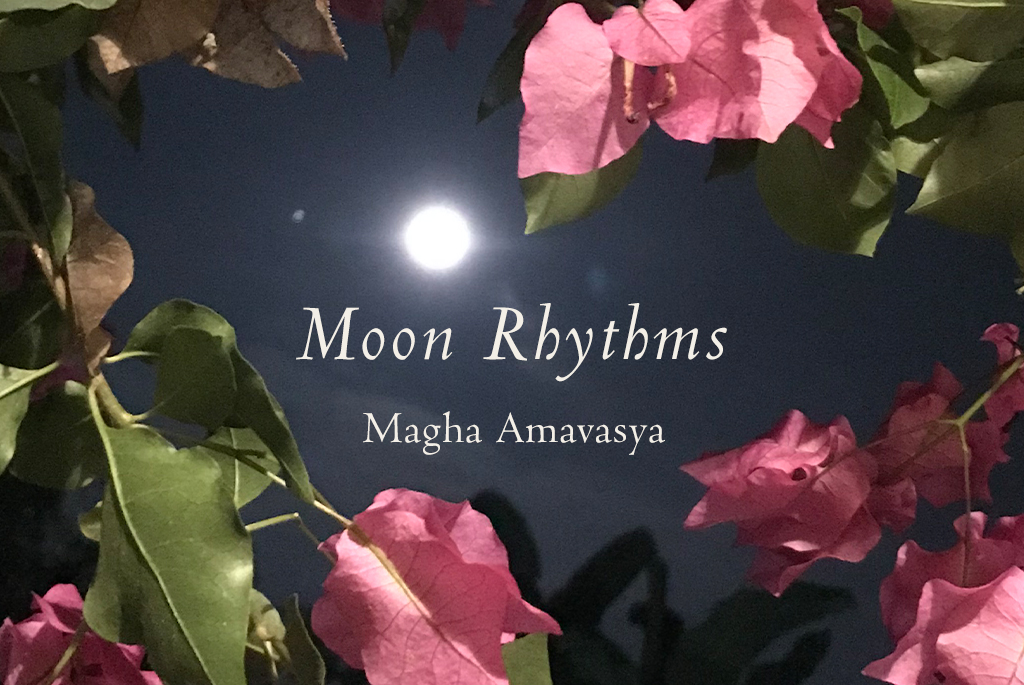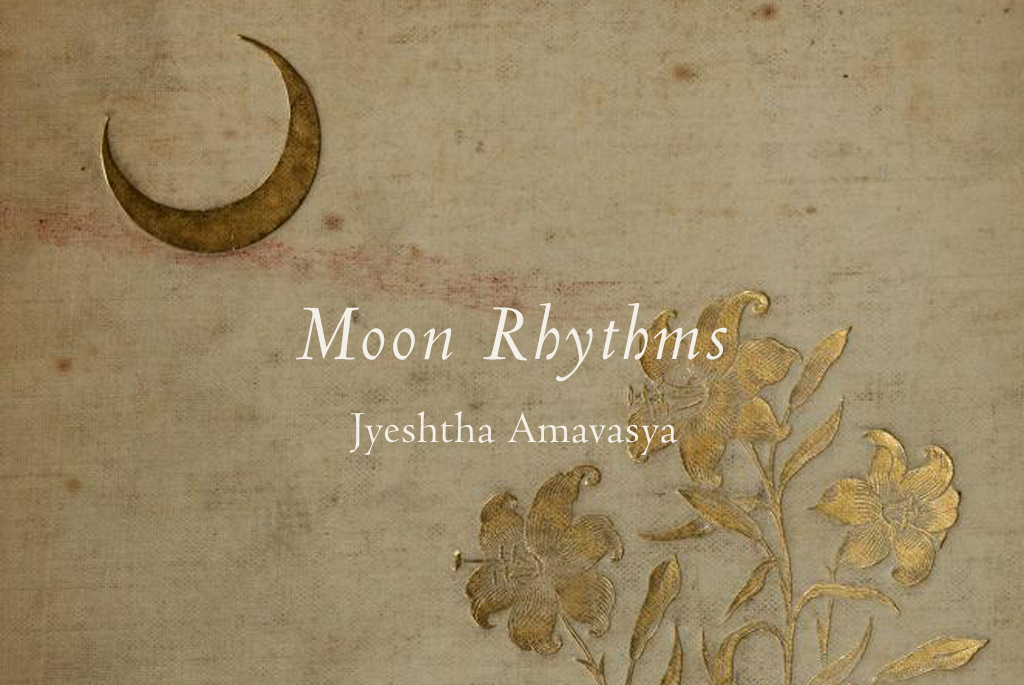




“What’s in a name? That which we call a rose by any other name would smell as sweet”, said Shakespeare in his play Romeo and Juliet.
But what about the Moon? The Moon is ever changing. It is never still. It is not the same every night. It grows into fullness. It wanes into nothingness. And in each state, each phase its energy is subtly different. And yet the Moon is still the Moon for us, even when we can’t see it as on a New Moon or Amavasya night. But to each of its phases, its qualities and energies there is a subtle alteration.
Today we are most familiar with the names that correspond to the visible phases of the Moon: Amavasya or the New Moon; Purnima or the Full Moon; Ekadashi – the Moon on the eleventh day of the waxing and the waning phase; and the crescent Moon – which emerges the day after Amavasya.
But once upon a time, the Moon was referred to with a wider range of names. These names acknowledged and celebrated the qualities, mythology, properties and powers of the Moon. One of the best-known lists of Moon names comes from a Sanskrit dictionary – the Amarkosha.
In the Amarkosha there are twenty names for the Moon. The Amarkosha is the common name for the Nāmaliṅgānuśāsanam, an ancient thesaurus in Sanskrit, written by Amarasimha. It is thought by many to be one of the oldest extant koshas (dictionary). It was written approximately 1500 years ago. These Sanskrit names for the Moon celebrate its beauty and acknowledge its powers; they are comments on the appearance of the Moon and its mythical abilities; they see the Moon as the harbinger of beauty but also as a philosophical concept. When you consider the twenty names in their entirety you can also see the outlines of a culture where the Moon was accorded centre space. And how each name celebrated the Moon in different ways.
Twenty Names of the Moon
Disclaimer: We at Paro are not Sanskrit scholars. So while we have researched the meaning of the names to the best of our ability, we cannot claim to be an authority for these meanings of the twenty names.